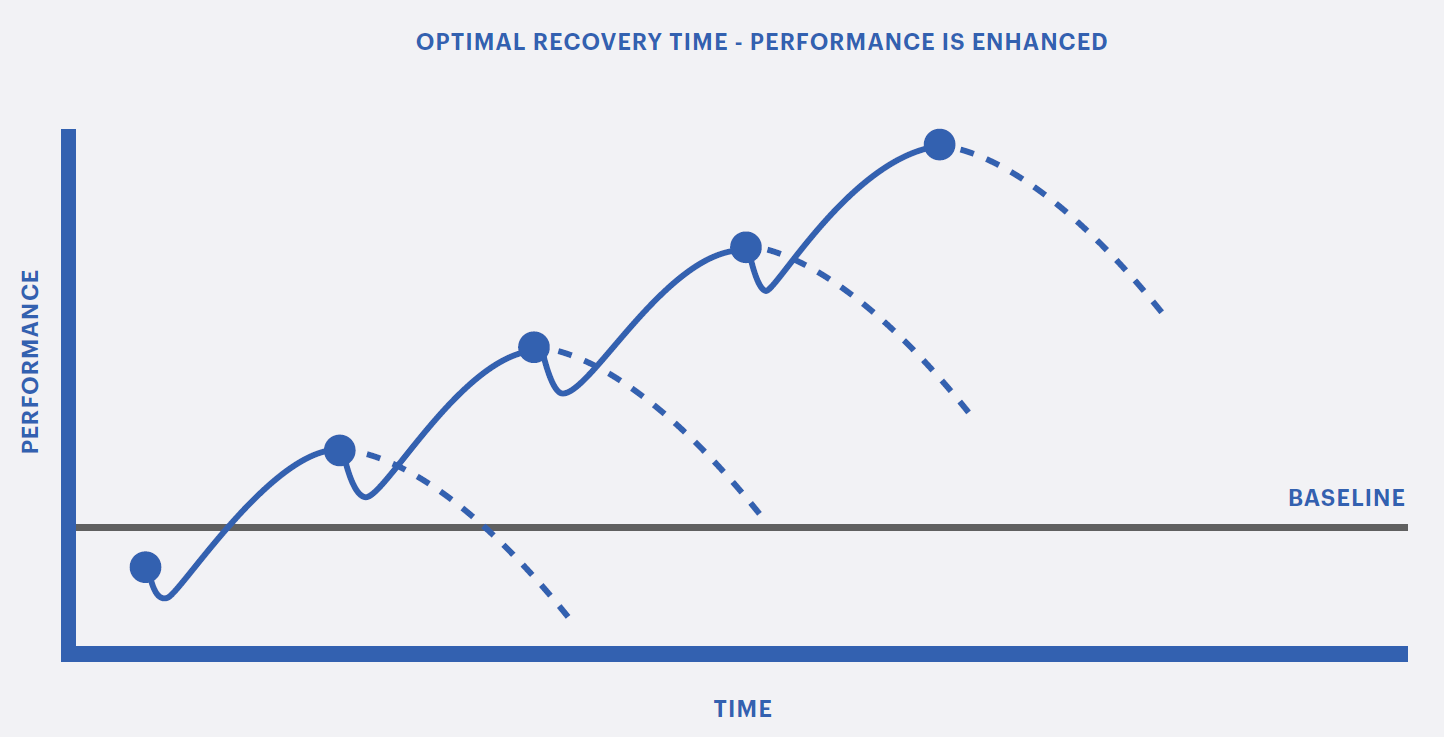Ideal Training Adaptation
Exercise is the foundation to stress and challenges that lead to physiological adaptions, including structural, biochemical, nervous system, etc. Your role as a professional trainer / coach is to understand your client's goals, then design and apply the properly aligned thoughtful stress to meet their goals through effective instruction and execution of the program.
Understanding that the body and mind is one organism and the thoughtful application of stress and recovery is essential for optimized health and performance. We understand that too much stress in any form is not good for the physical and mental body and can lead to deconditioning, reduced motivation, injury, and even disease.
An essential part of proper programming includes building a cycle of stress and recovery that your clients can realistically make a part of their lifestyle. If your program does not fit the clients lifestyle, it will not get the result they are looking for and can add to more negative stress (distress). The tricky part is that if not enough of the good quality stress, or eustress, is applied, your clients will probably not reach their goals, which can lead to demotivation and the loss of a client). Too much of even a good thing is still too much!
Understanding the GAS Principal, we know that when we apply proper physical stress in the form of exercise to challenge the clients current base line abilities, we are overloading the system. Proper overload will temporarily decrease the body's ability to do work through fatigue (work capacity). When the body and mind are then given the proper recovery, optimal physiological adaptations take place so that the body will be better prepared for the next challenge, supercompensation.
Human beings are adaptation machines intent on survival. Once recovered, now the body and mind raise the base line level of work capacity. This cycle can be repeated indefinitely until your client's goals are reached or genetic limitations are hit. An optimal training rhythm looks like the diagram below:





Join the conversation